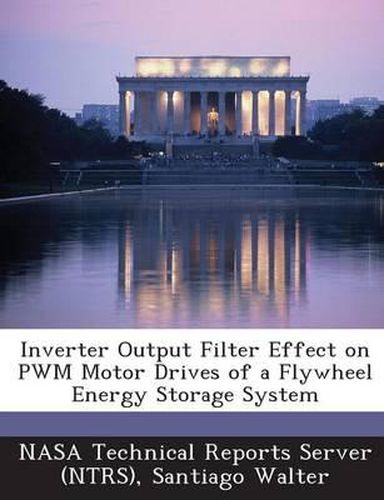Readings Newsletter
Become a Readings Member to make your shopping experience even easier.
Sign in or sign up for free!
You’re not far away from qualifying for FREE standard shipping within Australia
You’ve qualified for FREE standard shipping within Australia
The cart is loading…






NASA Glenn Research Center (GRC) has been involved in the research and development of high speed flywheel systems for small satellite energy storage and attitude control applications. One research and development area has been the minimization of the switching noise produced by the pulsed width modulated (PWM) inverter that drives the flywheel permanent magnet motor/generator (PM M/G). This noise can interfere with the flywheel M/G hardware and the system avionics hampering the full speed performance of the flywheel system. One way to attenuate the inverter switching noise is by placing an AC filter at the three phase output terminals of the inverter with the filter neutral point connected to the DC link (DC bus) midpoint capacitors. The main benefit of using an AC filter in this fashion is the significant reduction of the inverter s high dv/dt switching and its harmonics components. Additionally, common mode (CM) and differential mode (DM) voltages caused by the inverter s high dv/dt switching are also reduced. Several topologies of AC filters have been implemented and compared. One AC filter topology consists of a two-stage R-L-C low pass filter. The other topology consists of the same two-stage R-L-C low pass filter with a series connected trap filter (an inductor and capacitor connected in parallel). This paper presents the analysis, design and experimental results of these AC filter topologies and the comparison between the no filter case and conventional AC filter.
$9.00 standard shipping within Australia
FREE standard shipping within Australia for orders over $100.00
Express & International shipping calculated at checkout
NASA Glenn Research Center (GRC) has been involved in the research and development of high speed flywheel systems for small satellite energy storage and attitude control applications. One research and development area has been the minimization of the switching noise produced by the pulsed width modulated (PWM) inverter that drives the flywheel permanent magnet motor/generator (PM M/G). This noise can interfere with the flywheel M/G hardware and the system avionics hampering the full speed performance of the flywheel system. One way to attenuate the inverter switching noise is by placing an AC filter at the three phase output terminals of the inverter with the filter neutral point connected to the DC link (DC bus) midpoint capacitors. The main benefit of using an AC filter in this fashion is the significant reduction of the inverter s high dv/dt switching and its harmonics components. Additionally, common mode (CM) and differential mode (DM) voltages caused by the inverter s high dv/dt switching are also reduced. Several topologies of AC filters have been implemented and compared. One AC filter topology consists of a two-stage R-L-C low pass filter. The other topology consists of the same two-stage R-L-C low pass filter with a series connected trap filter (an inductor and capacitor connected in parallel). This paper presents the analysis, design and experimental results of these AC filter topologies and the comparison between the no filter case and conventional AC filter.